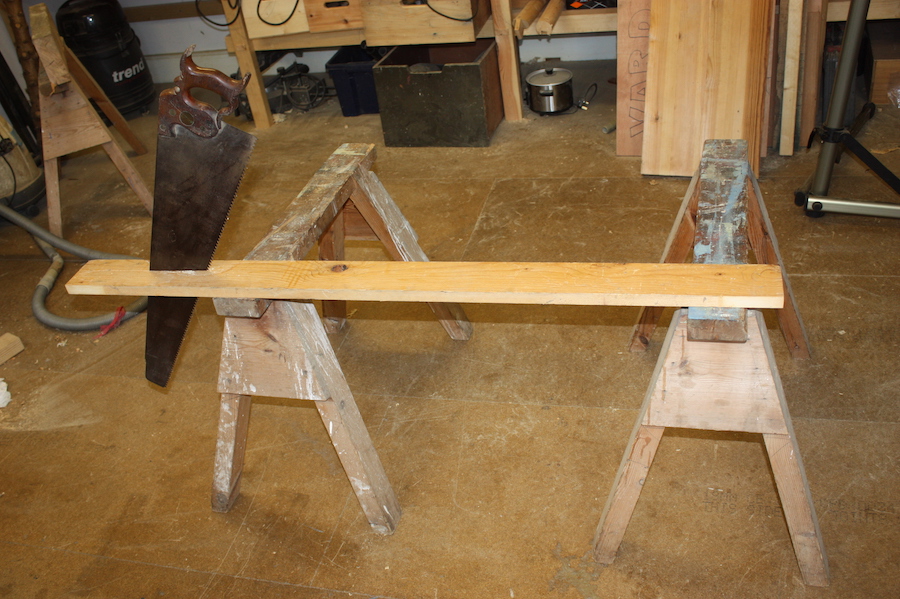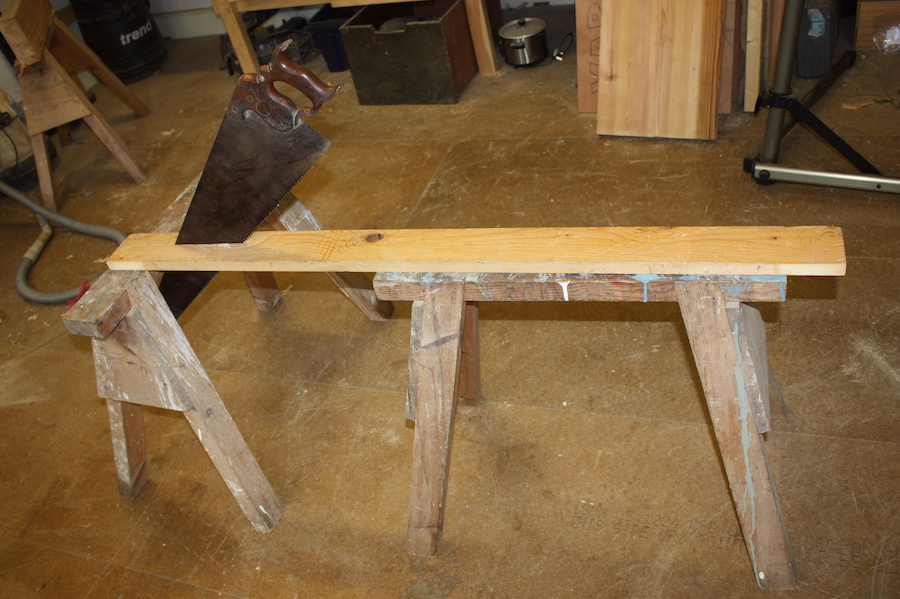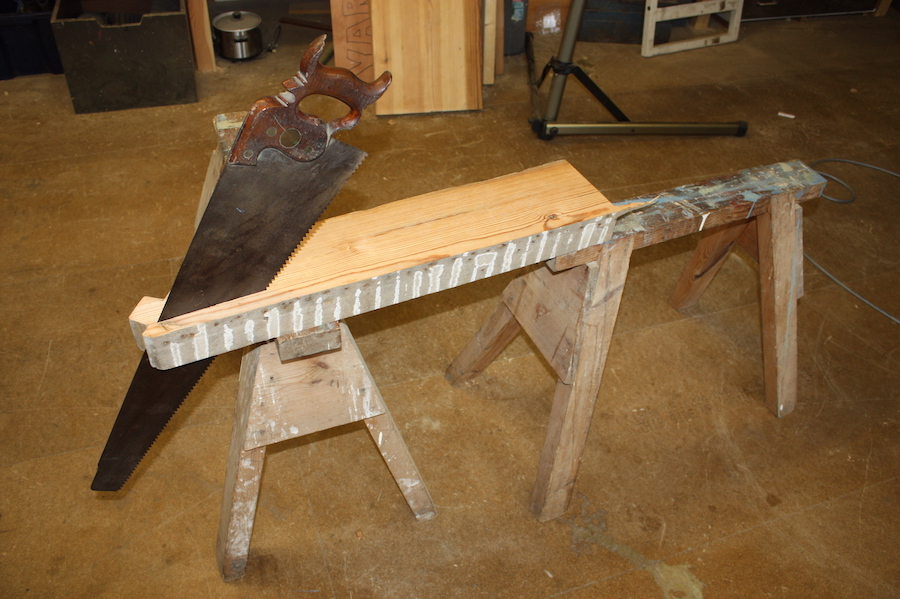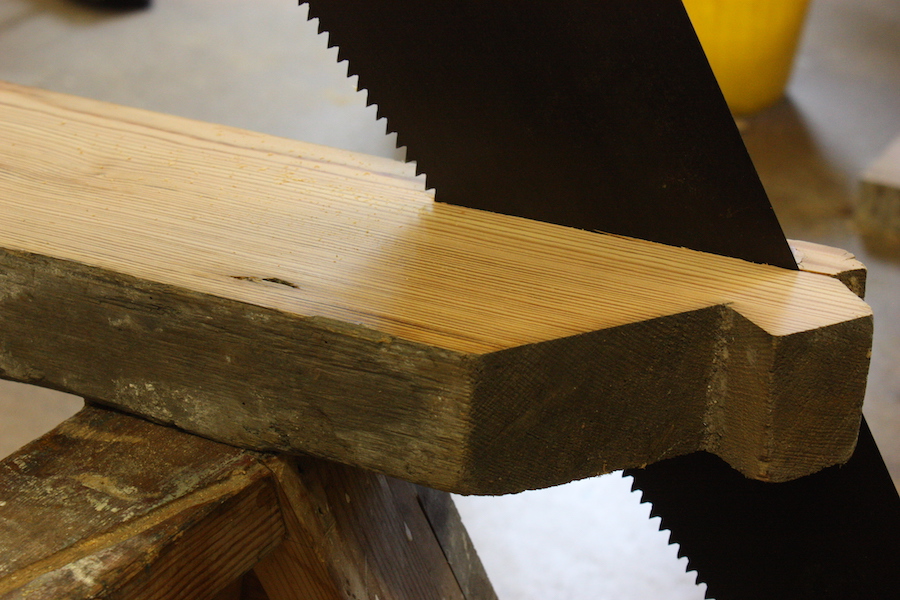Thought I'd get the old thing out and have a go (rip saw that is)
Board over 2 saw horses, knee as hold down:
Move board/saw horse to avoid cutting it in two. You could sit astride and do a two handed hold with the saw vertical - to relieve the monotony and the back ache
Doing OK with bit of 3" pitch pine
4 t.p.i. close up
Very easy and very adaptable with 2 saw horses. Quick and straight cut if set is open enough and wood not moving about. I've done it often this way (when I've had to) with occasional changes of position. Always well supported, wide or narrow, long or short, with direct arm movement / efficient saw stroke.
Splitting a board the other way and you have to use the vice as per the vids above.








